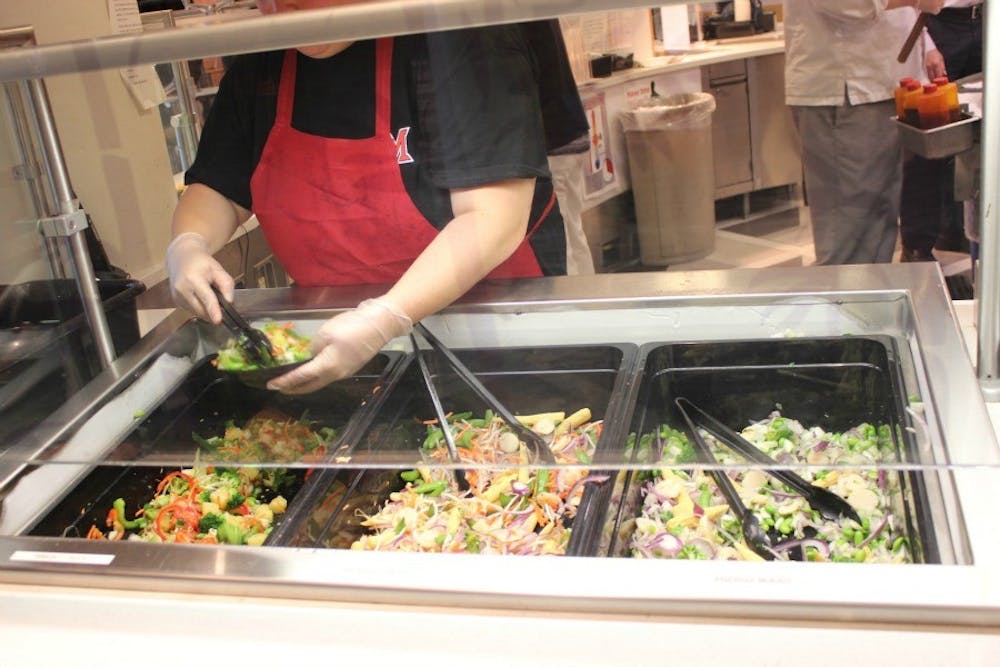By Morgan Nguyen, For The Miami Student
Maybe a bag of pretzels from the Armstrong Student Center's Emporium sounds like a good mid-day munchie. It's 150 calories - the recommended portion for a snack. It's a small bag, containing about two dozen mini pretzels, but in reality, the palm-sized bag actually holds two servings.
A similar oversight also occurs at a la carte dining locations across campus. Oversized portions, however harmless they seem, may be sabotaging what otherwise appears to be a healthy meal.
The general consensus is that portions are appropriately sized, with a few exceptions.
"I think food is generally well-portioned," said sophomore Sophie Marcum. "The [amount of] stir fry at Bell [Tower] is a little overboard, but you always have the easy option of bringing the food home."
Marcum said, when compared to portions provided at the average American restaurant, the servings sizes at Miami's a la carte dining options are reasonable.
Many students believe that portion control is also the responsibility of the individual ordering the food, not only the server.
"Since most places you can order how much of what you want, it's up to you to make those portions match up," said sophomore nutrition major Sarah Becker. "Generally, we're given more meat than a 3-ounce serving size, which is the size of a deck of cards."
The portions dining employees serve students are usually on par with the suggested serving size, although the exact amount can vary.
"The serving size often depends on the preference of the worker," said sophomore Danny Knettel, a student manager at Maplestreet Station. "Certain employees I work with insist upon only offering present portions, while others are willing to give more food if a student asks for a little extra."
Knettel said bacon is a primary example: the suggested serving size is three thin slices, which many employees, Knettel said, think looks meager on a plate, so extra is usually served. Student managers are not responsible for monitoring serving sizes; most kitchenware, such as ladles, are fit specifically for the portion size of the meal.
Students value the quality of food offerings as well as quantity. Becker said she would like to see more fresh vegetable and fruit option.
"It's hard to get a lot of tasty vegetables in, unless you're eating salads and stir fry every day," said Becker. "Whole-wheat bread is also the way to go, since there aren't a lot of whole-grain options on campus either."
She said cost and the presence of preservatives are other considerations.
"There's no reason fruit should be so expensive, when I can go to Kroger and spend so much less," said Becker.
The answer, for now, is for students and other folks dining on campus to make best use of available options. An online tool called MyTray is available for students hoping to maintain a healthy diet while dining on campus. MyTray is updated daily with the nutrition facts of food served; students can check the calories in anything from a smoothie from Miami Ice to two tablespoons of stir fry sauce at Bell Tower.
"Anyone can look up the nutritional info for the food we serve here," Knettel said. "If students need ways to keep a healthy and balanced diet, they should take advantage of the variety of options available as well as doing some research on MyTray and seeing how many calories are in the foods they are eating."
Students agree that while it takes a bit more effort than they'd like, finding and planning healthy, well-portioned meals on campus is doable.
"Eating healthy can feel challenging, but trying to get vegetables in at every meal in some way, and avoiding the unhealthy pastries is a good place to start," Becker said.

